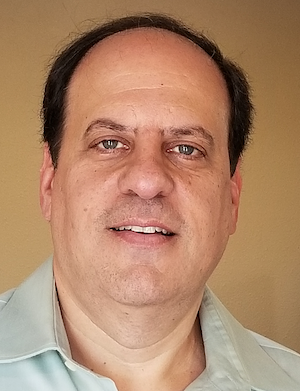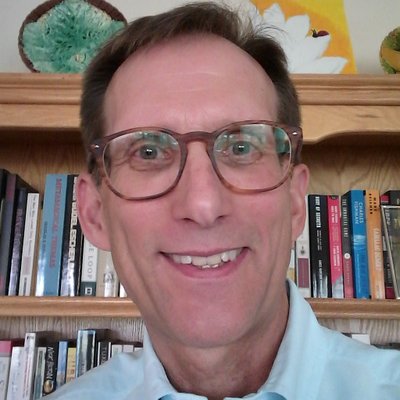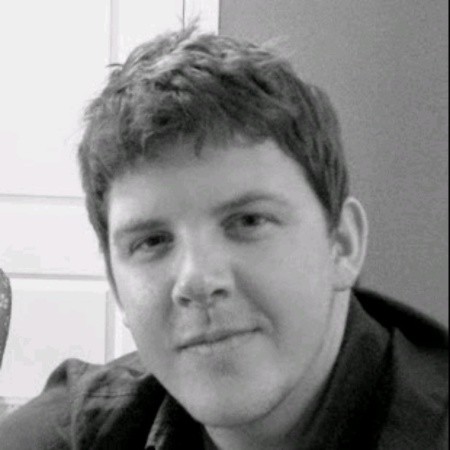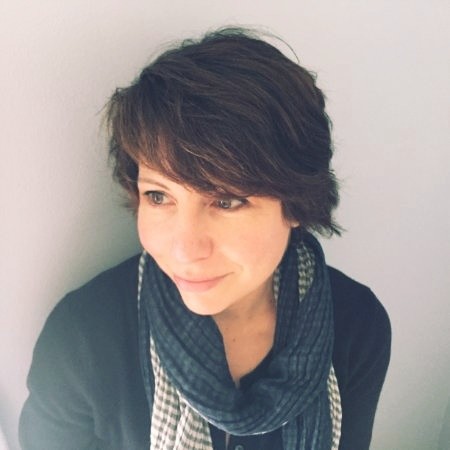Feature Articles
The State of Open Source in South Korea
 Open source software is growing exponentially all around the world, and South Korea is a vital part of that trend. While most South Korean open source projects don't get the international attention that projects from the Apache Foundation, the Linux Foundation, and similar organizations receive, they are making significant contributions to mobility, artificial intelligence, web technologies, and other areas. Samsung may be the best-known South Korean company working in open source, but Naver, Kakao, Coupang, and others are also writing important open source software and maintaining their projects on GitHub.
Open source software is growing exponentially all around the world, and South Korea is a vital part of that trend. While most South Korean open source projects don't get the international attention that projects from the Apache Foundation, the Linux Foundation, and similar organizations receive, they are making significant contributions to mobility, artificial intelligence, web technologies, and other areas. Samsung may be the best-known South Korean company working in open source, but Naver, Kakao, Coupang, and others are also writing important open source software and maintaining their projects on GitHub.
Ready or Not: New Report on Protecting the Public's Health
 The Trust for America's Health (TFAH) released its 2019 edition of what it hopes will be an annual report, Ready or Not: Protecting the Public's Health from Diseases, Disasters and Bioterrorism last February. The ground-breaking report warns about key global challenges ahead, like the risk of a flu pandemic; the impact of weather pattern changes due to climate change; the dangers of antimicrobial resistance, and others, and tries to offer advice on how to prepare for them.
The Trust for America's Health (TFAH) released its 2019 edition of what it hopes will be an annual report, Ready or Not: Protecting the Public's Health from Diseases, Disasters and Bioterrorism last February. The ground-breaking report warns about key global challenges ahead, like the risk of a flu pandemic; the impact of weather pattern changes due to climate change; the dangers of antimicrobial resistance, and others, and tries to offer advice on how to prepare for them.
Putting Healthcare on a Platform
 People in healthcare have been speculating for years about who or what will be the "Uber of healthcare." Uber shocked the transportation industry with its peer-to-peer business model, slick technologies, and almost blithe disregard for numerous regulations that might have dampened its model. Certainly, many thought, the creaky, inefficient healthcare system was vulnerable to disruption from a similar outsider, perhaps even Uber itself (UberHealth, after all).So I found it amusing that it turns out that Uber has aspirations itself; it wants to Amazon...Healthcare wants to be more like Uber. Uber wants to be more like Amazon. Amazon wants to be part of healthcare. Someone, somewhere, sometime will somehow break that circle and healthcare will have the platform(s) it needs. We're waiting.
People in healthcare have been speculating for years about who or what will be the "Uber of healthcare." Uber shocked the transportation industry with its peer-to-peer business model, slick technologies, and almost blithe disregard for numerous regulations that might have dampened its model. Certainly, many thought, the creaky, inefficient healthcare system was vulnerable to disruption from a similar outsider, perhaps even Uber itself (UberHealth, after all).So I found it amusing that it turns out that Uber has aspirations itself; it wants to Amazon...Healthcare wants to be more like Uber. Uber wants to be more like Amazon. Amazon wants to be part of healthcare. Someone, somewhere, sometime will somehow break that circle and healthcare will have the platform(s) it needs. We're waiting.
Lost in the Signal...Is Most Healthcare Spending Being Wasted?
 I finally got around to reading Bryan Caplan's The Case Against Education: Why the Education System Is a Waste of Time and Money. In it, Dr. Caplan, an economics professor at George Mason University and self-avowed libertarian, argues that, aside from basic literacy and numeracy, our educational system serves less to educate and more as a way to signal to employers who might make good employees. Oh, boy did this book make me think about our healthcare system.Dr. Caplan's views on economic signaling are by no means out of the mainstream, although his application of it to education may be. Think of it this way:
I finally got around to reading Bryan Caplan's The Case Against Education: Why the Education System Is a Waste of Time and Money. In it, Dr. Caplan, an economics professor at George Mason University and self-avowed libertarian, argues that, aside from basic literacy and numeracy, our educational system serves less to educate and more as a way to signal to employers who might make good employees. Oh, boy did this book make me think about our healthcare system.Dr. Caplan's views on economic signaling are by no means out of the mainstream, although his application of it to education may be. Think of it this way:
ONC Gets It Mostly Right with TEFCA 2.0
 On April 17, 2019 the Office of the National Coordinator for Health Information Technology (ONC) released the second draft of its Trusted Exchange Framework and Common Agreement (TEFCA) for comment. The initial version was released more than a year ago in January 2018 (see my original blog). As before, this is in response to a requirement imposed by Congress in the 21 Century Cures Act. After a somewhat lengthy (but well written) introduction, the document contains three parts (compared to just two parts the first time around)...
On April 17, 2019 the Office of the National Coordinator for Health Information Technology (ONC) released the second draft of its Trusted Exchange Framework and Common Agreement (TEFCA) for comment. The initial version was released more than a year ago in January 2018 (see my original blog). As before, this is in response to a requirement imposed by Congress in the 21 Century Cures Act. After a somewhat lengthy (but well written) introduction, the document contains three parts (compared to just two parts the first time around)...
Hydroelectricity and Transmission Planning in Chile Use Open Source Geospatial Tools
 We were able to leverage a number of open source geospatial tools, such as QGIS, GDAL/OGR, and the PostGIS extension to the PostgreSQL open source relational database, in order to control the quality of the geospatial data at hand. These tools also helped us carry out the types of spatial analysis necessary to determine relationships between the various objects of value and, on the one hand, the potential hydropower projects, and on the other, the possible alternative transmission corridors. The key to hydroelectric capacity planning in Chile is the ability to generate the maximum amount of electricity, given certain restrictions, while assuring a fixed level of interaction with objects of value.
We were able to leverage a number of open source geospatial tools, such as QGIS, GDAL/OGR, and the PostGIS extension to the PostgreSQL open source relational database, in order to control the quality of the geospatial data at hand. These tools also helped us carry out the types of spatial analysis necessary to determine relationships between the various objects of value and, on the one hand, the potential hydropower projects, and on the other, the possible alternative transmission corridors. The key to hydroelectric capacity planning in Chile is the ability to generate the maximum amount of electricity, given certain restrictions, while assuring a fixed level of interaction with objects of value.
From Data Silos to Black Holes...the Story of America's Healthcare System?
 The scary thing about black holes is that their gravity inexorably drags in everything within its reach. Unless you are very far away or have sufficient escape velocity, you will get pulled in, and, once you are sucked in, you are never getting out. We call it our "healthcare" system, but usually what we mean is medical care. It treats illnesses, it puts us under the care of medical professionals, it turns us into patients. A doctor's visit begats prescriptions, and perhaps some testing. Testing leads to procedures. Procedures lead to hospital stays. Hospital stays lead to....you get the idea. What we might once have thought of as "health" -- or never thought about at all -- becomes "health care," a.k.a. medical care. And once you transform from a person, whose health belongs to you, to a patient, your health is never quite your own again. You've been sucked into the medical care black hole.
The scary thing about black holes is that their gravity inexorably drags in everything within its reach. Unless you are very far away or have sufficient escape velocity, you will get pulled in, and, once you are sucked in, you are never getting out. We call it our "healthcare" system, but usually what we mean is medical care. It treats illnesses, it puts us under the care of medical professionals, it turns us into patients. A doctor's visit begats prescriptions, and perhaps some testing. Testing leads to procedures. Procedures lead to hospital stays. Hospital stays lead to....you get the idea. What we might once have thought of as "health" -- or never thought about at all -- becomes "health care," a.k.a. medical care. And once you transform from a person, whose health belongs to you, to a patient, your health is never quite your own again. You've been sucked into the medical care black hole.
Health Organizations Implore Congress to Fund Public Health Surveillance Systems
 HLN Consulting joined more than eighty organizations, institutions, and companies in imploring Congress to fund public health surveillance systems. The appropriations request letters – one to the House and one to the Senate – seek one billion in funding over ten years (and $100 million in FY 2020) for the Centers for Disease Control and Prevention (CDC). This funding would allow CDC, state, local, tribal, and territorial health departments to move from sluggish, manual, paper-based data collection to seamless, automated, interoperable IT systems and to recruit and retain skilled data scientists to use them.
HLN Consulting joined more than eighty organizations, institutions, and companies in imploring Congress to fund public health surveillance systems. The appropriations request letters – one to the House and one to the Senate – seek one billion in funding over ten years (and $100 million in FY 2020) for the Centers for Disease Control and Prevention (CDC). This funding would allow CDC, state, local, tribal, and territorial health departments to move from sluggish, manual, paper-based data collection to seamless, automated, interoperable IT systems and to recruit and retain skilled data scientists to use them.
12 Open Source Tools for Natural Language Processing
 Natural language processing (NLP), the technology that powers all the chatbots, voice assistants, predictive text, and other speech/text applications that permeate our lives, has evolved significantly in the last few years. There are a wide variety of open source NLP tools out there, so I decided to survey the landscape to help you plan your next voice- or text-based application. For this review, I focused on tools that use languages I'm familiar with, even though I'm not familiar with all the tools. (I didn't find a great selection of tools in the languages I'm not familiar with anyway.) That said, I excluded tools in three languages I am familiar with, for various reasons.
Natural language processing (NLP), the technology that powers all the chatbots, voice assistants, predictive text, and other speech/text applications that permeate our lives, has evolved significantly in the last few years. There are a wide variety of open source NLP tools out there, so I decided to survey the landscape to help you plan your next voice- or text-based application. For this review, I focused on tools that use languages I'm familiar with, even though I'm not familiar with all the tools. (I didn't find a great selection of tools in the languages I'm not familiar with anyway.) That said, I excluded tools in three languages I am familiar with, for various reasons.
Is WeWork's Ecosystems Approach a Model for Healthcare Platforms?
 Maybe you don't work in a WeWork office setting. Maybe you haven't ever visited one. Maybe you haven't even heard of WeWork. In that case, then you'll probably be surprised that this audacious real estate start-up now has a valuation close to $50b, with over 400,000 "members" in 100 cities across 27 countries (and they claim to "touch" 5 million people worldwide). Or that their plans go well beyond their unique twist towards office sharing. Who in healthcare is thinking about them, and who should be worried...or intrigued?...WeWork was never just about finding people and companies office space: it wanted to "help people work to make a life, not just a living." It focused on building a culture in its spaces, complete with amenities and events to help build a community among its members.
Maybe you don't work in a WeWork office setting. Maybe you haven't ever visited one. Maybe you haven't even heard of WeWork. In that case, then you'll probably be surprised that this audacious real estate start-up now has a valuation close to $50b, with over 400,000 "members" in 100 cities across 27 countries (and they claim to "touch" 5 million people worldwide). Or that their plans go well beyond their unique twist towards office sharing. Who in healthcare is thinking about them, and who should be worried...or intrigued?...WeWork was never just about finding people and companies office space: it wanted to "help people work to make a life, not just a living." It focused on building a culture in its spaces, complete with amenities and events to help build a community among its members.
9 Resources for Data Science Projects
 Data science, machine learning, artificial intelligence, and deep neural nets are all hot topics these days (and key terms that might help this post with some SEO, unless the AI sees through my attempts). Below I've shared several of the resources I use regularly while working on data science projects over the last few years. I don't read many books, so that I've shared even one is evidence of how important it is. There are enough resources here to get even the most novice engineer started on a path towards data science mastery in this new age where data science skills will be needed at every level. There is a tool for performing the work, a class taught by a renowned Stanford professor, websites with tutorials to give you real-life experience, and a site dedicated to making the latest research available to all for free so you can learn more if you want.
Data science, machine learning, artificial intelligence, and deep neural nets are all hot topics these days (and key terms that might help this post with some SEO, unless the AI sees through my attempts). Below I've shared several of the resources I use regularly while working on data science projects over the last few years. I don't read many books, so that I've shared even one is evidence of how important it is. There are enough resources here to get even the most novice engineer started on a path towards data science mastery in this new age where data science skills will be needed at every level. There is a tool for performing the work, a class taught by a renowned Stanford professor, websites with tutorials to give you real-life experience, and a site dedicated to making the latest research available to all for free so you can learn more if you want.
GAO Report on Patient Matching: Nothing New Under the Sun
 On January 15, 2019 the US Government Accountability Office (GAO) released a new report to Congress, Health Information Technology: Approaches and Challenges to Electronically Matching Patients' Records across Providers. This report is in response to the mandate in the 21st Century Cures Act for the GAO to study patient matching. To develop this report, GAO reviewed available literature and interviewed more than thirty-five stakeholders (who are not identified) over the course of a year. I have written several blogs and a feature article on patient matching developments in the US. Similarly, this new GAO report is an excellent retrospective on industry efforts over the past several years.
On January 15, 2019 the US Government Accountability Office (GAO) released a new report to Congress, Health Information Technology: Approaches and Challenges to Electronically Matching Patients' Records across Providers. This report is in response to the mandate in the 21st Century Cures Act for the GAO to study patient matching. To develop this report, GAO reviewed available literature and interviewed more than thirty-five stakeholders (who are not identified) over the course of a year. I have written several blogs and a feature article on patient matching developments in the US. Similarly, this new GAO report is an excellent retrospective on industry efforts over the past several years.
ONC Releases New NPRM on Interoperability: How Might it Affect Public Health?
 On February 11, 2019, the Office of the National Coordinator for Health Information Technology (ONC) released its latest Notice of Proposed Rulemaking (NPRM) to Improve the Interoperability of Health Information. Referred to by some people as the "Information Blocking NPRM," since this was the primary topic anticipated, the document actually covers a host of other topics related to interoperability driven primarily by requirements of the 21st Century Cures Act. Besides the initial text of the NPRM, ONC also released a set of summary slides and fact sheets to help explain the document.
On February 11, 2019, the Office of the National Coordinator for Health Information Technology (ONC) released its latest Notice of Proposed Rulemaking (NPRM) to Improve the Interoperability of Health Information. Referred to by some people as the "Information Blocking NPRM," since this was the primary topic anticipated, the document actually covers a host of other topics related to interoperability driven primarily by requirements of the 21st Century Cures Act. Besides the initial text of the NPRM, ONC also released a set of summary slides and fact sheets to help explain the document.
How Open Data and Open Tools Can Save Lives During a Disaster
 If you've lived through a major, natural disaster, you know that during the first few days you'll probably have to rely on a mental map, instead of using a smartphone as an extension of your brain. Where's the closest hospital with disaster care? What about shelters? Gas stations? And how many soft story buildings-with their propensity to collapse-will you have to zig-zag around to get there? Trying to answer these questions after moving back to earthquake-prone San Francisco is why I started the Resiliency Maps project. The idea is to store information about assets, resources, and hazards in a given geographical area in a map that you can download and print out.
If you've lived through a major, natural disaster, you know that during the first few days you'll probably have to rely on a mental map, instead of using a smartphone as an extension of your brain. Where's the closest hospital with disaster care? What about shelters? Gas stations? And how many soft story buildings-with their propensity to collapse-will you have to zig-zag around to get there? Trying to answer these questions after moving back to earthquake-prone San Francisco is why I started the Resiliency Maps project. The idea is to store information about assets, resources, and hazards in a given geographical area in a map that you can download and print out.
So I Survived HIMSS19…
 This was perhaps more of a fete than it initially seems. The conference was massive, with over 40,000 attendees. It centered around a trade show exhibit hall that spanned multiple football fields in length. In some ways, it was so big that I felt somewhat discouraged from attending some educational sessions because they were located so far from where I was hanging out that I could get back and forth in time. So I spent most of my time at the Interoperability Showcase since HLN was participating in two of the use cases: Immunization Integration & CDS, featuring our ICE open source immunization evaluation and forecasting system...
This was perhaps more of a fete than it initially seems. The conference was massive, with over 40,000 attendees. It centered around a trade show exhibit hall that spanned multiple football fields in length. In some ways, it was so big that I felt somewhat discouraged from attending some educational sessions because they were located so far from where I was hanging out that I could get back and forth in time. So I spent most of my time at the Interoperability Showcase since HLN was participating in two of the use cases: Immunization Integration & CDS, featuring our ICE open source immunization evaluation and forecasting system...